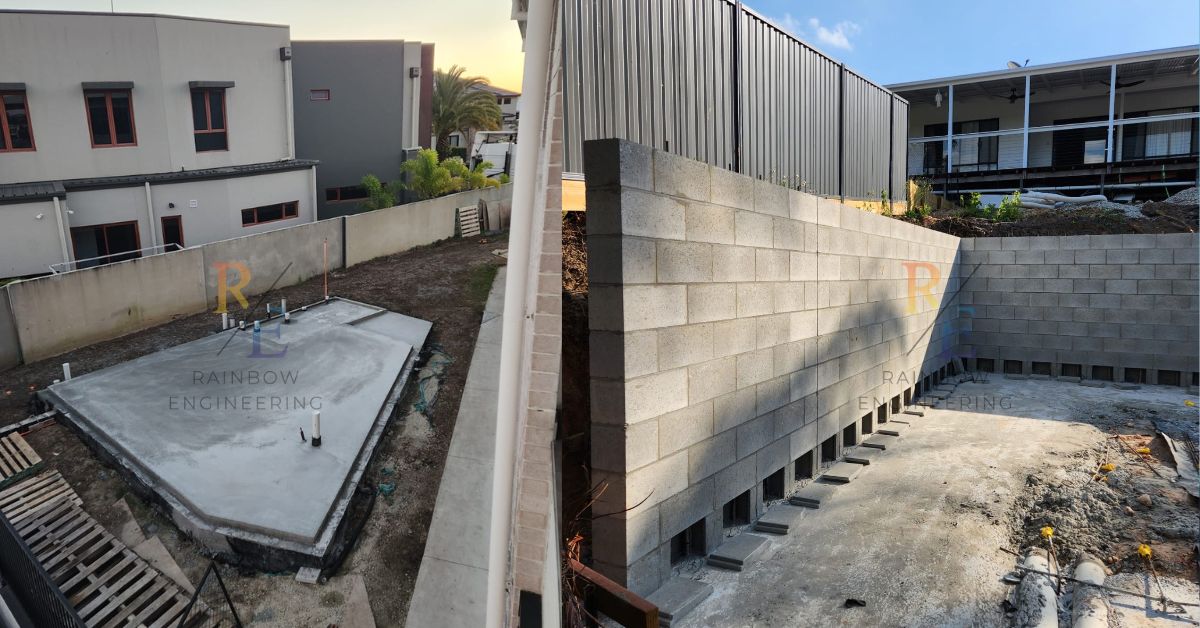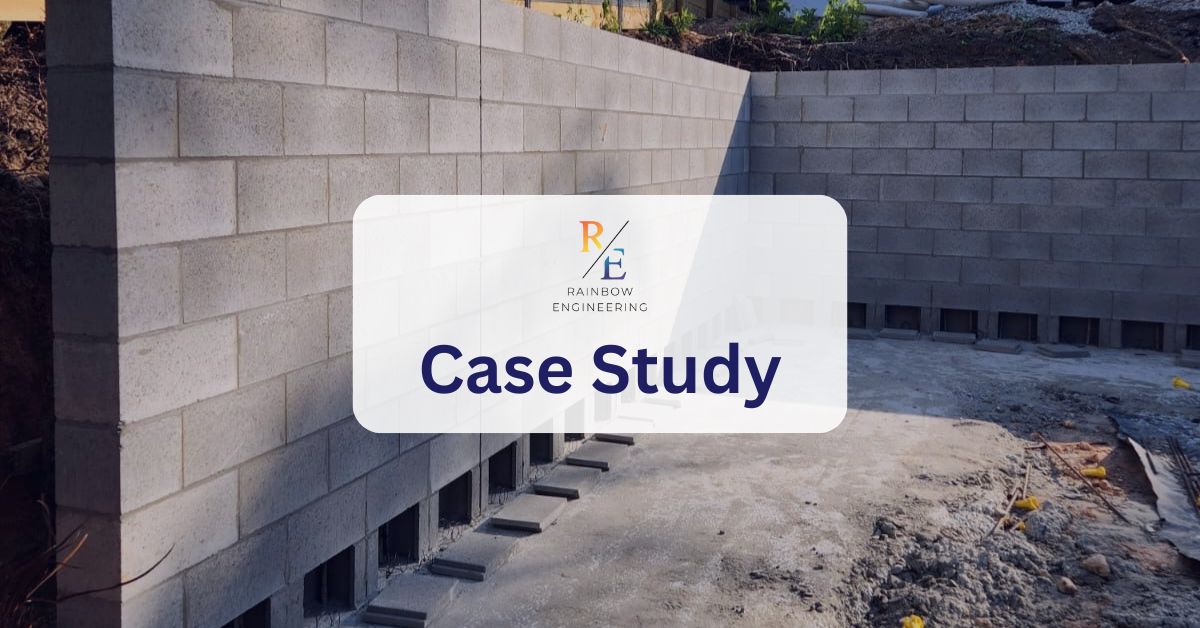Background
In Queensland, new residential buildings and Dwellings are covered by QBCC statutory insurance that protects owners against structural defects for up to six years and six months after practical completion.
Many property owners and body corporate committees are unaware that defects discovered after this period are no longer covered, meaning rectification costs fall entirely on the owners.
A recent example involved a luxury multi-story modern living residential building in South-East Queensland. The building had been completed in 2019, and the builder’s structural warranty insurance was set to expire in late 2025.
The Body Corporate engaged Rainbow Engineering to carry out a comprehensive structural inspection before the expiry date to ensure any latent or hidden defects were identified in time to be claimed under the builder’s warranty.
Inspection Findings

The structural inspection revealed several issues that, if left unattended, could have developed into serious safety and financial problems:
1. Cracks in Basement Parking Slab
Several structural cracks were observed throughout the basement parking slab.
The cracks are predominantly located near the construction joints and column footings, extending both longitudinally and transversely.
Upon visual inspection and non-destructive testing, the following was noted:
- The cracks range between 0.5 mm and 3.0 mm in width, with evidence of moisture migration and efflorescence, indicating ongoing water penetration through the concrete matrix.
- The cracking pattern suggests a combination of shrinkage, inadequate reinforcement continuity, and slab flexural movement, possibly exacerbated by differential settlement or poor compaction of the sub-base material.
- Several cracks coincide with areas where previous concrete repair attempts have failed, implying that the underlying structural cause was not addressed.
The extent and nature of the cracking are inconsistent with typical serviceability limits prescribed in AS 3600 “Concrete Structures” and require remedial action to prevent further deterioration and corrosion of embedded reinforcement.
2. Failure of Waterproofing to Retaining Block Walls
The retaining block walls located along the basement perimeter and adjacent to the landscaped areas exhibit clear signs of waterproofing failure, as evidenced by:
- Moisture staining, salt deposits (efflorescence), and paint delamination on the internal wall surfaces facing the basement.
- Seepage lines visible through the mortar joints, confirming the failure of the membrane or protective coating system behind the wall.
- Absence of effective drainage or weep holes, contrary to the requirements of Australian Standards and NCC.
This failure is likely due to either non-compliant installation of the membrane system during construction or long-term degradation from hydrostatic pressure without sufficient subsoil drainage.
If left untreated, continued moisture ingress will compromise the wall’s durability, and may reduce the structural capacity due to progressive corrosion of the reinforcement within the blockwork.
3. Water Ingress into Units Adjacent to Garden Beds
Units located adjacent to external garden beds have reported recurring water ingress, particularly during periods of heavy rainfall, which is common in Queensland.
The inspection revealed the following contributing factors:
- Garden beds are positioned directly against the external walls without adequate physical separation or waterproof barrier, contrary to the principles of NCC Volume Two.
- The ground levels of the garden beds are higher than the internal finished floor levels, allowing surface water to flow towards the building envelope.
- No evidence of compliant subsoil drainage, weep holes, or damp-proof course (DPC) installation was observed.
- Water staining on the interior skirting and wall base indicates capillary rise and seepage through masonry pores, confirming loss of weatherproofing integrity.
This condition poses a significant risk of long-term dampness, mould formation, and degradation of internal finishes and structural elements.
Immediate rectification is recommended, including reinstatement of waterproofing membranes, installation of subsoil drainage, and regrading of garden beds to direct stormwater away from the building.
Outcome
The observed conditions collectively indicate systemic waterproofing and drainage design deficiencies, coupled with inadequate construction practices.
Failure to address these issues may result in progressive structural deterioration, non-compliance with NCC performance requirements, and potential health and safety risks to occupants.
Rainbow Engineering prepared and submitted a RPEQ-certified Structural Assessment Report to the body corporate prior to the QBCC insurance expiry date.
The report detailed each defect, provided photographic evidence, referenced relevant Australian Standards, and recommended appropriate rectification works.
As a result:
- Rainbow Engineering was tasked with the provision of A detailed remediation design and rectification scope
- The builder was required by QBCC to carry out rectification works under the statutory warranty at no cost to the owners.
- The Body Corporate avoided repair expenses estimated $300,000.
- The property’s long-term structural integrity and compliance were protected, improving asset value and occupant safety.
Key Takeaways for Property Owners and Body Corporate Committees
- Act Before the Warranty Expires: Once the six-year-and-six-month period lapses, any defect, no matter how significant, becomes the owner’s financial responsibility.
- Independent Structural Review is Critical: A registered structural engineer (RPEQ) can identify non-visible or latent defects that may not be obvious to the naked eye or to general maintenance contractors.
- Compliance and Legal Protection: A formal inspection report provides a clear, dated record to support warranty claims, insurance requests, or future legal proceedings if the builder disputes liability.
- Long-Term Asset Protection: Regular inspections and early defect reporting protect common property, reduce future repair levies, and maintain the market value of the property.
Conclusion
For property owners and body corporate committees, conducting a structural inspection before the expiry of builder warranty insurance is a vital safeguard and a non-costly proactive step can save owners tens of thousands of dollars and provide long-term peace of mind. It ensures any construction defects are addressed while the builder remains legally responsible, preventing costly repairs later.

